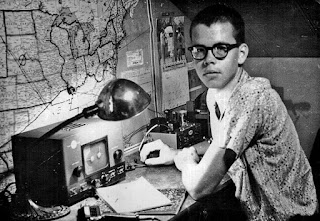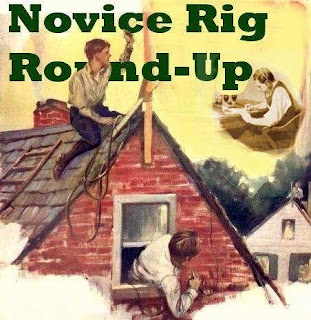 The 2018 Novice Rig Roundup (NRR)
The 2018 Novice Rig Roundup (NRR)
One of the most enjoyable operating events of the year is fast approaching -- the Novice Rig Roundup or 'NRR'. Technically, it is a contest, but I have the feeling that most participants think of it as just a lot of fun and a nice opportunity to hear and work some of the great old 'classics' of the past -- rigs that were used when they were teenage Novices or rigs that they could only drool about owning, back in those formative years when they each discovered the magic of radio.
 |
| WN4HQW's '62 Novice station (now N4CF) |
The dates to remember are 0000 UTC March 3 - 2359 UTC March 11 and this multi-day opportunity is, for me, what makes the NRR so enjoyable. With a nice diversion from the usual 'contest frenzy' associated with standard weekend operating events, the NRR can be enjoyed throughout the week, whenever you choose to participate. If last year's operating patterns continue, you should find activity at any time of the day ... and even more as sunset arrives.
With the fast-approaching solar minimum, we will be hard-pressed to relive the glory days of worldwide 15m propagation, as even last year's event proved to be tough on this band. With a little luck and, hopefully, a well-timed solar flare, we may get lucky! If you operate during the daylight hours, please get on 15m and give it a shot ... and be sure to announce your activity on the NRR's sked and chat page here, so that others will know where to find you, especially if you are rock bound in true Novice fashion. With our present spotty conditions, we need all the help we can get and the sked page proved a very valuable asset during last year's affair.
Although technically not required, if you plan to participate it's best to obtain your own NRR number, which is an easy 30-second process.
Additionally, there is an online logger where participants can post their daily log. The nifty logger also keeps track and figures out your score as it goes and no 'after contest' log needs to be submitted. If you plan on submitting a log, the logger is a requirement. The logger will also require you to set up a 'log-in' and once again, a simple 30-second process will take care of that from here.

Stations may run either crystal-control or VFO or can switch between either method ... the online logger will keep track and score things appropriately. Stations running in both Novice 1 and Novice 2 categories (probably most common), will be eligible for prizes in both modes if they make at least ten contacts using a Novice 1 station or if they work ten Novice 1 category stations.
All of the rules and information can be found on the NRR's excellent website. As well, the soapbox comments and station pictures from last year's NRR may provide the inspiration that you need to spark-up your own activity in this year's event ... from what I can tell, this year will be bigger and busier than ever!
There is also a dedicated NRR Yahoo Group, often the source of much valuable discussion.
Last year I ran my homebrew Longfeller in the (now eliminated) QRP category, and had a ton of fun. You can read about it here. This year, I have refurbished a nice Drake 2NT that had been gathering dust in the basement for over 25 years ... it's all ready to go now, but a problem with the VF-1 VFO has arisen. The combination works well on 40m and above but on 80 it's a different story. The VFO runs on 160m and it seems that the 2NT balks at the idea of doubling in the buffer stage to 80m. Unless I solve the problem, I'll be rockbound on 3579, 3550 or 3560kc. ... it was 'kilocycles' back then, which always seemed to make more sense to me than 'kilohertz'.
If you have access to the web while operating, be sure to bookmark and check-in to the NRR's realtime chat page. Many ops that are crystal controlled will announce their operating frequencies, making it easier for you to find them ... sometimes way up or down from the normal NRR watering holes of ~ 3550 - 3650 kHz, 7100 -7125 kHz, 21.100 - 21.150 MHz and 28.114, 28.120 MHz ... and don't forget to check the colorburst crystal frequency of 3579!
Of course with the large number of rockbound stations (on crystals), be sure to look above and below these frequencies. It's good practice to listen well above and below your own frequency as well, for anyone answering your CQ who may be up or down the band on crystal control. Unlike today, this was very common practice back in the Novice days!
 |
| courtesy: Harry - VE7AIJ |
You still have time to get that old clunker on the air but if that's not possible, you can join the fun with your modern rig as well ... all are welcome to jump in and have a great week of radio-fun. I think you will be surprised, just as I was last year, how good some of these old classics can sound ... and you'll hear some great bug-fists as well.
As indicated on the NRR website, this is "more of an EVENT than just a typical contest ... once again taking our OLD ham radios off the shelf and putting them to use again! "
See you in the 2018 NRR!















I will be running my homebuilt transmitter with a Hallicrafters S20R receiver and using 7114 or 7115. Hope to hear from you!